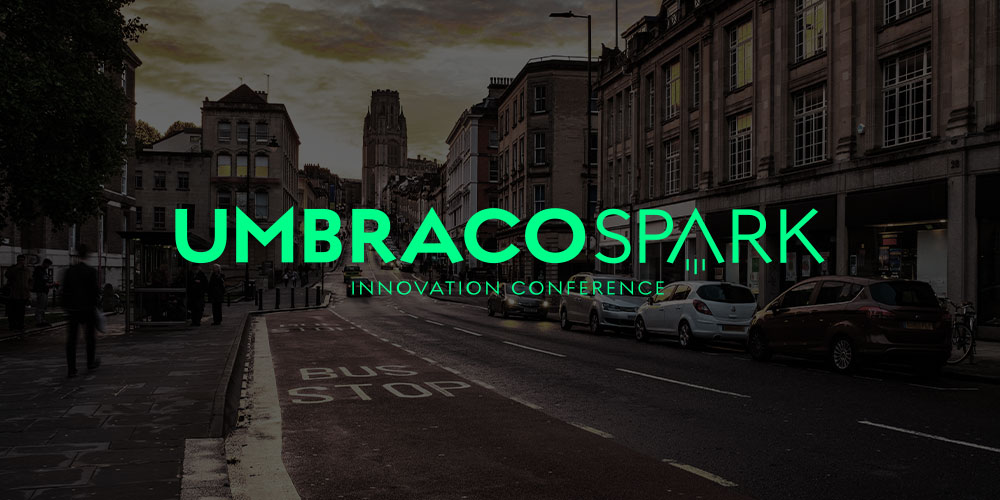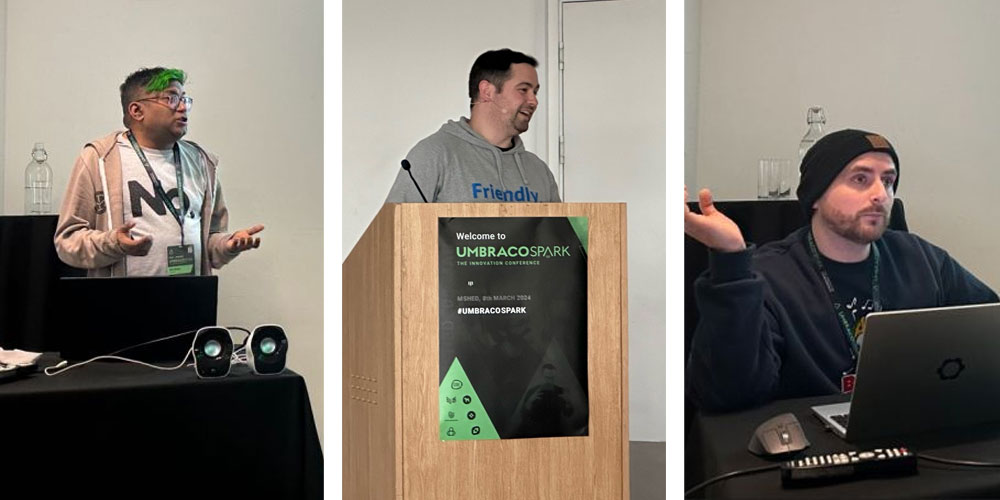The first major Umbraco event of the year is behind us. We were fortunate and delighted to attend, gaining firsthand insights into the latest implementations, new extensions, solutions, and packages and learning about Umbraco's plans for 2024 and beyond. In anticipation of the imminent release of Umbraco 14, we're excited to share insights and impressions from the recent Umbraco Spark conference in Bristol.

Having published our booklet on the Umbraco Community, we committed to engage more actively in this year's community events. Thus, we couldn't afford to miss a conference like Umbraco Spark, especially since it was held in our "second home," Bristol. While the event is a regular fixture, this edition garnered exceptional popularity. Gibe Digital reported a turnout of 160 individuals from the Umbraco community orbit.
Tickets had been sold out for weeks, almost causing us to miss our chance to attend. Thankfully, through the generosity of a friendly agency, one of the sponsors, our CEO Paweł Nienartowicz, managed to secure a spot at M Shed, participating in sessions and meeting fellow attendees in person.
While many discussions were highly technical and geared primarily toward developers, we've curated a selection of highlights that should pique the interest of all platform enthusiasts.
UMBRACO 14 COMING SOON
Umbraco has a great tradition of treating us to regular updates every six months. Version 13 hasn't even had the chance to lose its "new car smell," and we're already shifting our focus to Umbraco 14. Jacob Overgaard and Lone Iversen, Umbraco's Frontend Architect and Developer, set the tone for the conference with a keynote centered, naturally, on the forthcoming version of the platform. We can anticipate its release in May, with the release candidate slated for April.
So, what can you expect from the upcoming v.14?
New back office and more customizability
Customization and extensibility have always been integral to the Umbraco brand. The process will become even simpler with the retirement of AngularJS from the "Fourteen's" tech stack and its replacement with Web Components.
The shift away from outdated legacy technology is primarily exciting for developers, yet, as is often the case, it also significantly impacts the business side of website development. The new back office, built on Web Components, will boast more excellent compatibility with various frameworks. This enhancement will streamline the creation of unique integrations, leading to faster and more effective implementation of custom solutions.
Adding custom properties
In Umbraco 14, adding new properties, especially those using custom controllers, will be much simpler. Now, Umbraco includes Swagger, which allows you to quickly generate 'Resources' for your TypeScript frontend using Swagger Codegen. This makes calling controllers and using custom classes a piece of cake.
Package migrations
Umbraco's Staff Engineer, Lee Kelleher, demonstrated the upgrade of the Robots.txt package from version 7 (AngularJS-based) to version 14. This underscored the improvements in the developer experience mentioned above. The talk explored Web Components, Lit, and custom controllers for managing the robots.txt file. Lee showcased the simplicity of extending the back office, creating custom properties, sections, or entire packages, using Swagger to streamline the process.
Cloud, Sustainability, Inclusion, and Umbraco's Future
Umbraco Cloud has evolved significantly since its inception nearly a decade ago. During his session, Dan Lister from Umbraco HQ provided insights into recent developments, highlighting the impact of incorporating Azure Kubernetes on the platform's scalability.

After a recent great webinar, we were familiar with Umbraco's latest developments on reducing digital products' carbon footprint. However, during Hannah Smith and Thomas Morris's talks, it was still good to see where things are right now with the sustainability package.
Rachel Breeze's presentation on accessibility was both intriguing and motivating. Inclusive web design aligns closely with Umbraco's development philosophy, which we greatly appreciate. While compliance with WCAG rules is crucial, Umbraco DXP offers developers a range of tools to streamline the creation and viewing of website versions tailored for individuals with diverse visual impairments or specific needs, such as dyslexia fonts. Additionally, there has been an excellent recent course (link) tailored for coders.
Towards the end, Ravi Mohta guided us through Umbraco's evolution, illustrating its transformation from a standard CMS to a fully-fledged composable DXP while underlining the pivotal role of the open-source community in this journey.
The significance of an active community in DXP development cannot be overstated, a point we emphasize continuously. Events like Umbraco Spark underscore this fact. If you're part of the community but missed the conference and wish to connect — whether for potential support on your intricate Umbraco projects or simply to exchange ideas — we'd be delighted to meet you at Codegarden in a few weeks. Or, we can arrange an online meeting if you can't wait!
Looking for a Umbraco Partner? Drop us a line.


